The life that thrives among the dead: How wildlife finds a home in the graveyards and churchyards of Britain
Home to a veritable ‘Noah’s Ark of species’, thanks to never being ploughed, sprayed or fertilised, our churchyards offer a sacred haven for flora and fauna, says Laura Parker.

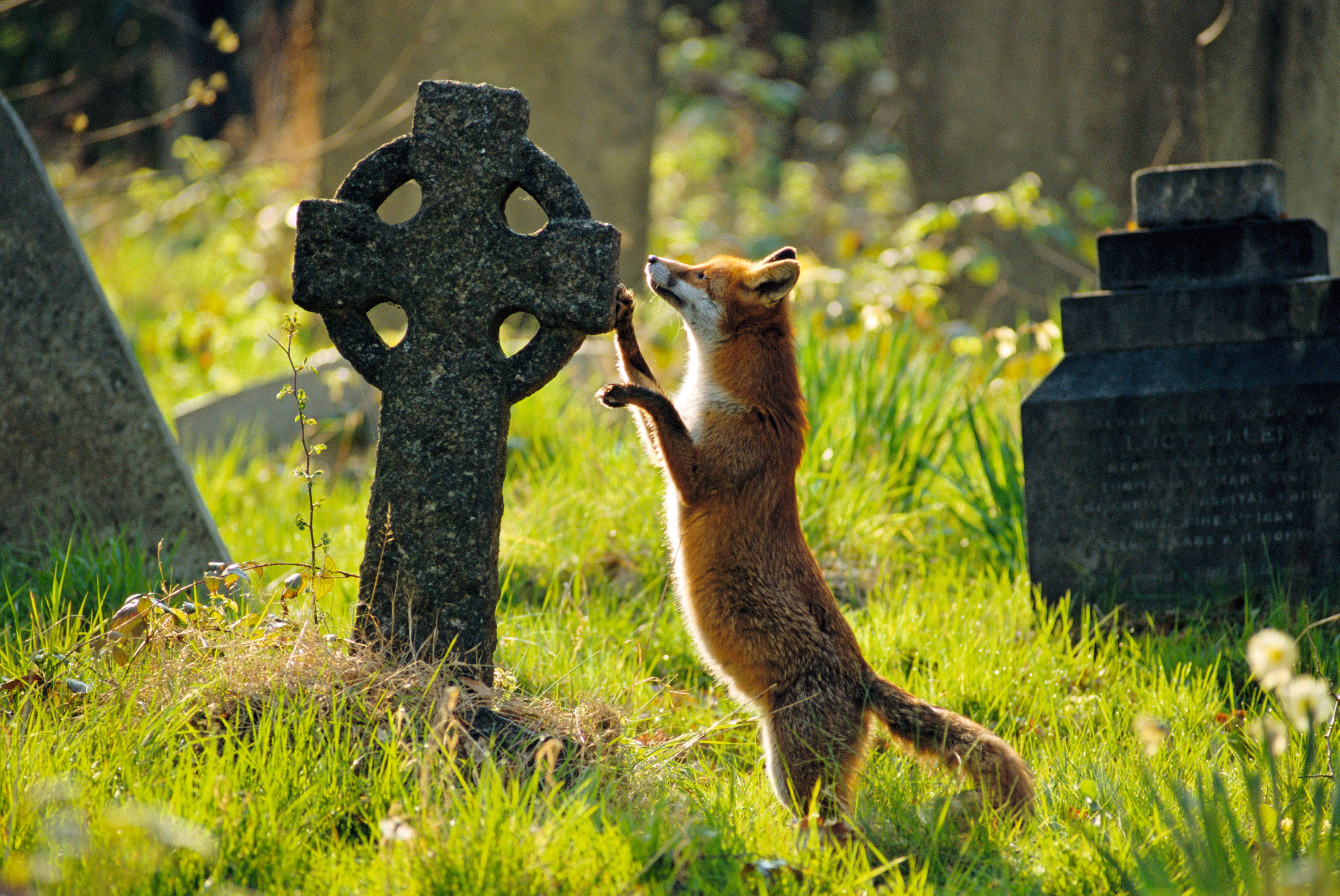
If you want to find a heartening and positive story about Nature, look to your local churchyard. There, between the lychgate and the porch, a quiet revolution is going on. The seeds of this ferment can be found, literally, among the headstones, where ancient turf has lain undisturbed for centuries. Untouched by agricultural improvements, such as ploughing, pesticides and fertilisers, the ground may hold a genetic seedbank dating back 800 years.
There is a widespread and growing movement to understand, appreciate and preserve churchyards as valuable and biodiverse patches of land where, against the general run of things, many plants and creatures are thriving. ‘Churchyards are a Noah’s Ark of species,’ declares Harriet Carty, director of Caring for God’s Acre, a conservation charity for burial grounds. ‘As the wider countryside and urban spaces have become more hostile, wildlife has withdrawn to these safe, unchanged spaces. Creatures that were common 50 years ago and are now under threat, such as hedgehogs, slow worms and spotted flycatchers, will be in your local churchyard.’
Pay a visit to the grounds of your nearest place of worship and you are increasingly likely to come across signs and folders bulging with information about flora and fauna, from amphibians to wildflowers. Perhaps you will notice a lichen-spotter clutching a hand lens and examining gravestones, a birder with binoculars trained on a pair of peregrine falcons atop the spire or a primary-school group scouring the grass for beetles.
Some of this fresh enthusiasm has been engendered by Caring for God’s Acre, which offers plentiful resources for those managing churchyards for wildlife.
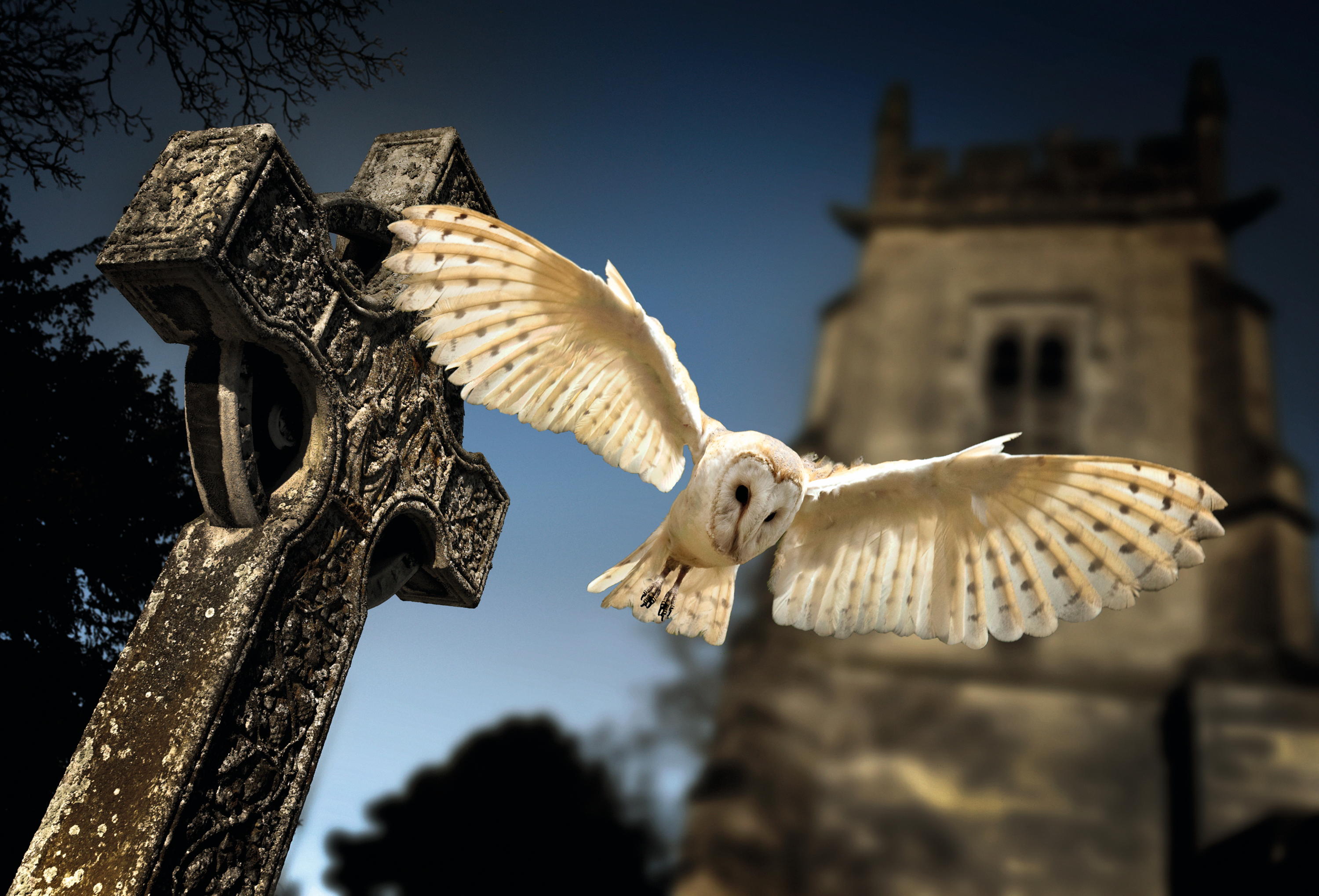
How silently, how silently...: The peace of a graveyard is disturbed not a whit by a barn owl.
Every June, the charity co-ordinates ‘Love your Burial Ground Week’, which, last year, spawned more than 400 events, from guided Nature and history walks to school projects and community picnics. One key activity is ‘Churches Count on Nature’, a citizen-science project to record wildlife in churchyards, whereby participants are encouraged to use the iNaturalist mobile-phone app to capture their observations. The charity then has these verified by experts in particular fields, such as lichens or beetles.
Britain has at least 20,000 churchyards and burial grounds — together amounting to a small national park — and conservation efforts can, therefore, make a significant difference. Thankfully, there are plenty going on, all over the country.
In the East Riding of Yorkshire, a combination of parish councillors, the local authority and wildlife enthusiasts is reviving the five-acre graveyard donated in 1869 to the magnificent Grade I-listed medieval parish church of St Mary’s in Beverley. Karyn Murby from the Molescroft Wildlife Network was involved. ‘The churchyard is well loved and beautiful, but was not doing so well in terms of ecology,’ she explains. ‘The grass was merely cut and left, encouraging only dandelions. Caring for God’s Acre provided a five-year management plan and materials and attended a public meeting to talk it through. We have focused on flowers to attract insects, which were surprisingly good last summer, with an incredible number of ladybirds.’
Exquisite houses, the beauty of Nature, and how to get the most from your life, straight to your inbox.
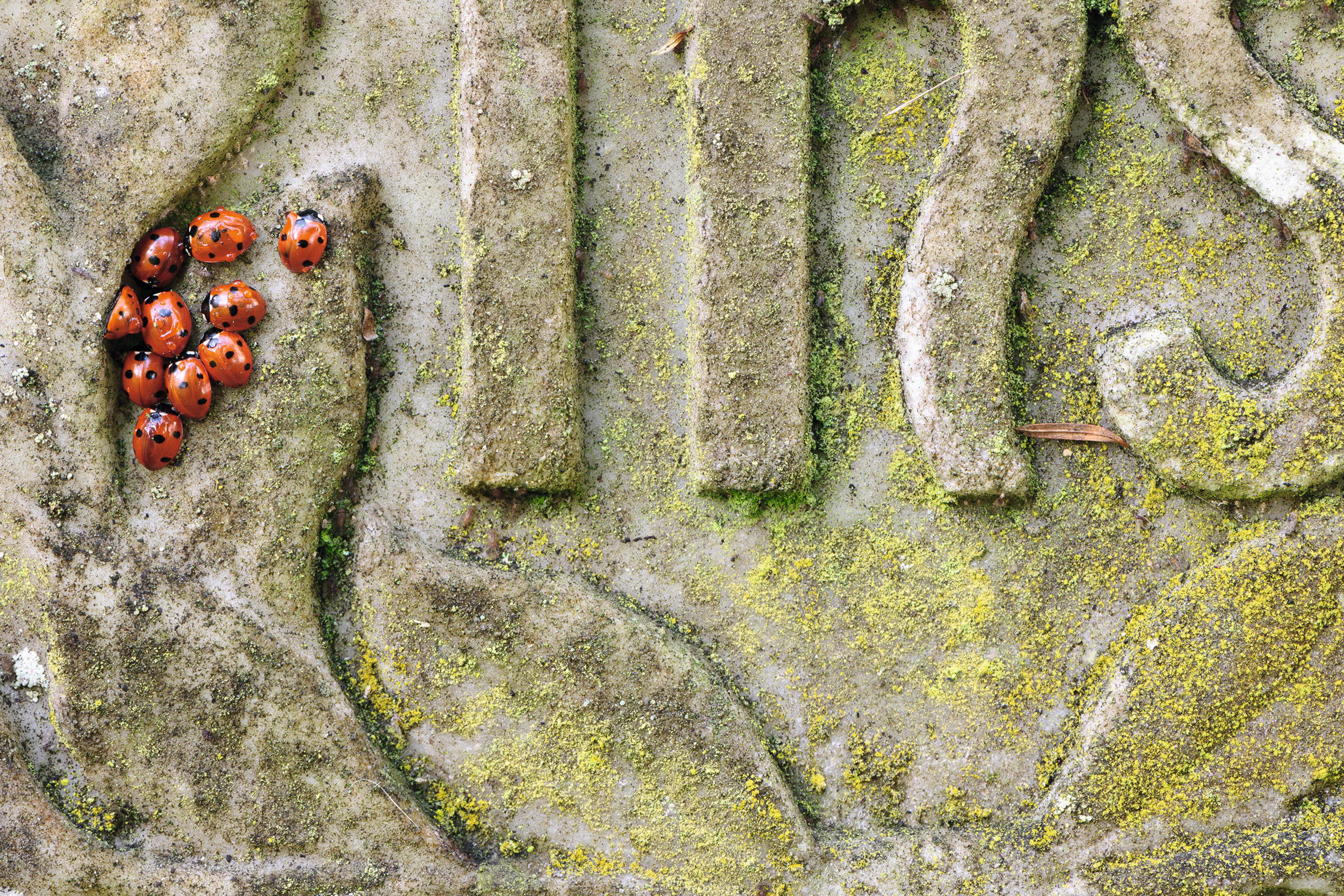
Feeding the five thousand insects: a churchyard seedbank can hold myriad plants, supporting butterflies, bees, ladybirds and more in a jamboree of biodiversity.
Similarly, the Somerset Wildlife Trust has been working with the Diocese of Bath and Wells since 2021 and now has 120 communities taking part in its Wilder Churches & Burial Grounds initiative, helping it to manage grassland, provide food and shelter for small mammals and make wildlife corridors. Understanding what is already in the churchyard is paramount, says the trust’s Pippa Rayner. ‘Often, people want to take up turf and sow wildflower seeds, but we can say you’ve already got a meadow, simply let it grow,’ she points out. ‘Allowing grassland to flourish after years of close mowing can reveal perennial flowers, such as pyramidal orchids and betony, that have been there all along, as well as helping native fine grasses — however, don’t forget wildflowers need grass cuttings to be cleared away.’
As well as grass, Dr Rayner stresses that churchyards may have ancient trees supporting bats and birds, and fruit trees that attract pollinators. Stone structures offer nooks and crannies for lizards, amphibians and small mammals, as well as supporting lichens, mosses and liverworts.
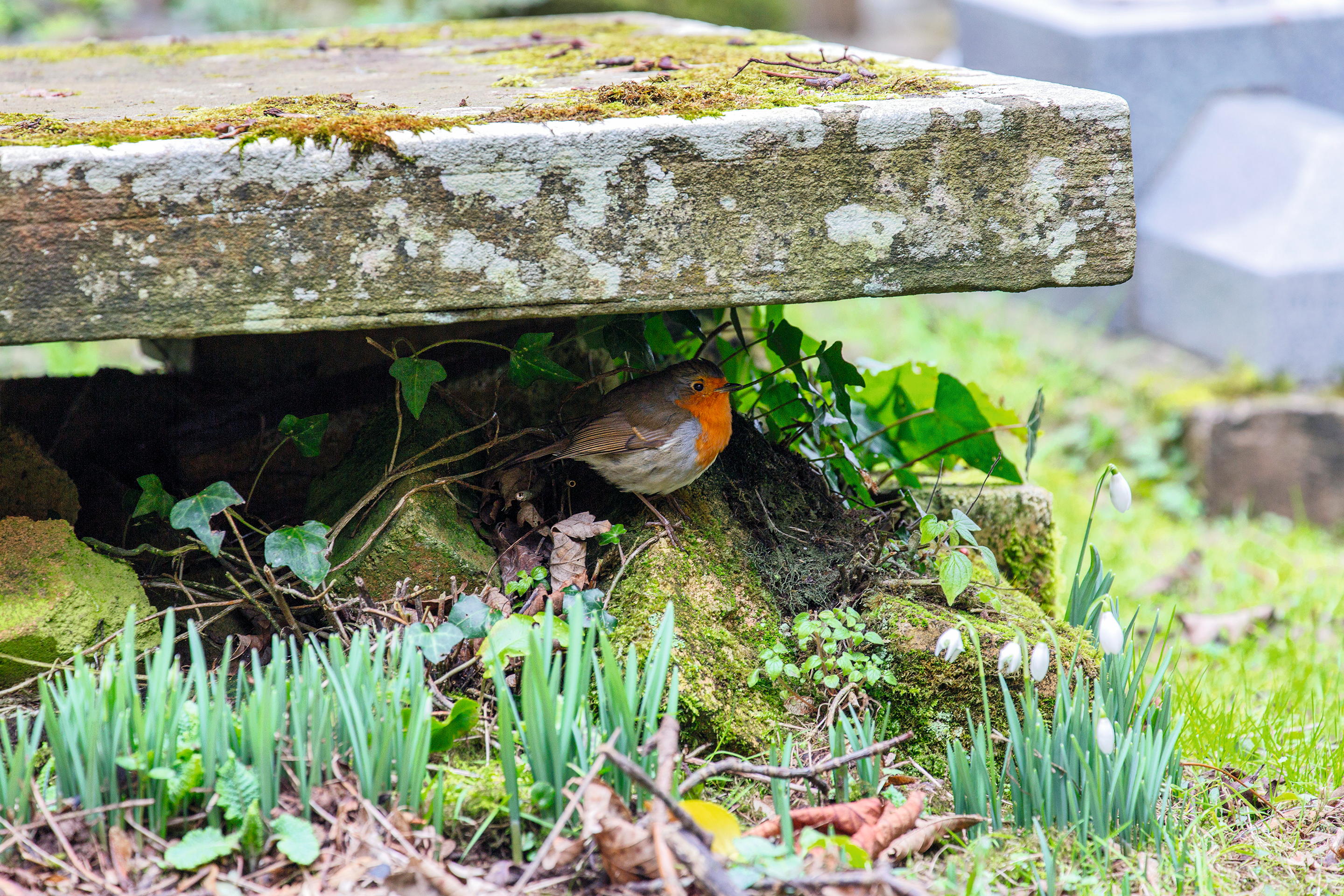
Few churches are unvisited by a robin, his red breast a reminder of Christ’s crown of thorns.
Five years ago in Warwickshire, a village Nature group was asked to help out with wildlife activity in the churchyard of St Mary’s, Middle Tysoe. ‘This mushroomed and has expanded into the creation of other wildlife areas in the parish, with grants from the Cotswolds National Landscape,’ notes Rosemary Collier of Tysoe Wildlife Group. ‘The parish council is making a local Nature action plan.’
Nature-friendly initiatives are not confined to rural village churchyards or particular denominations. ‘No church is too small,’ enthuses church warden Deborah Colvin, of the central London church of St James’s Piccadilly, W1. She advocates creating micro-habitats: using tubs to make a pond or a bog garden, setting up homes for birds, bugs and bees, and managing amenity grass for meadow plants and fungi. Mrs Colvin is sure that mindsets can be changed: ‘Autumn leaves are not a nuisance, they are next year’s water-saving, nutrient-giving mulch. Cracks between paving stones contain whole ecosystems if not weeded. Messy is good.’
The church has run a community project called Aftermath: Weeds & Wilding to celebrate the resistance and potential of the 42 species of weeds that sprang up in the ruins after the church was bombed in 1940. It’s also developing a programme called ‘Conversations Under Trees’ and offers mini tours focused on mosses, fossils and lichens.
The British Lichen Society has been surveying churchyards for lichens since the 1990s and has more than 450,000 records from religious sites across the UK. ‘In many parts of England, churchyards offer the only rock environment for lichens and they are much less disturbed than in other habitats,’ observes its vice-president, Mary Steer. ‘Lichen colonies provide homes for small insects, which, in turn, are food for animals and birds further up the food webs.’
There’s plenty else to look out for. The 800 ancient and veteran yews in the churchyards of England and Wales make up three-quarters of the British population. Looking after them could involve preventing snow damage and managing ivy. As ever, there is a balance. Offering good habitat and food for birds and bees, ivy can shade out lichen. Protective on a simple monument, it can cause destruction if allowed to get into joints on crosses or chest tombs.
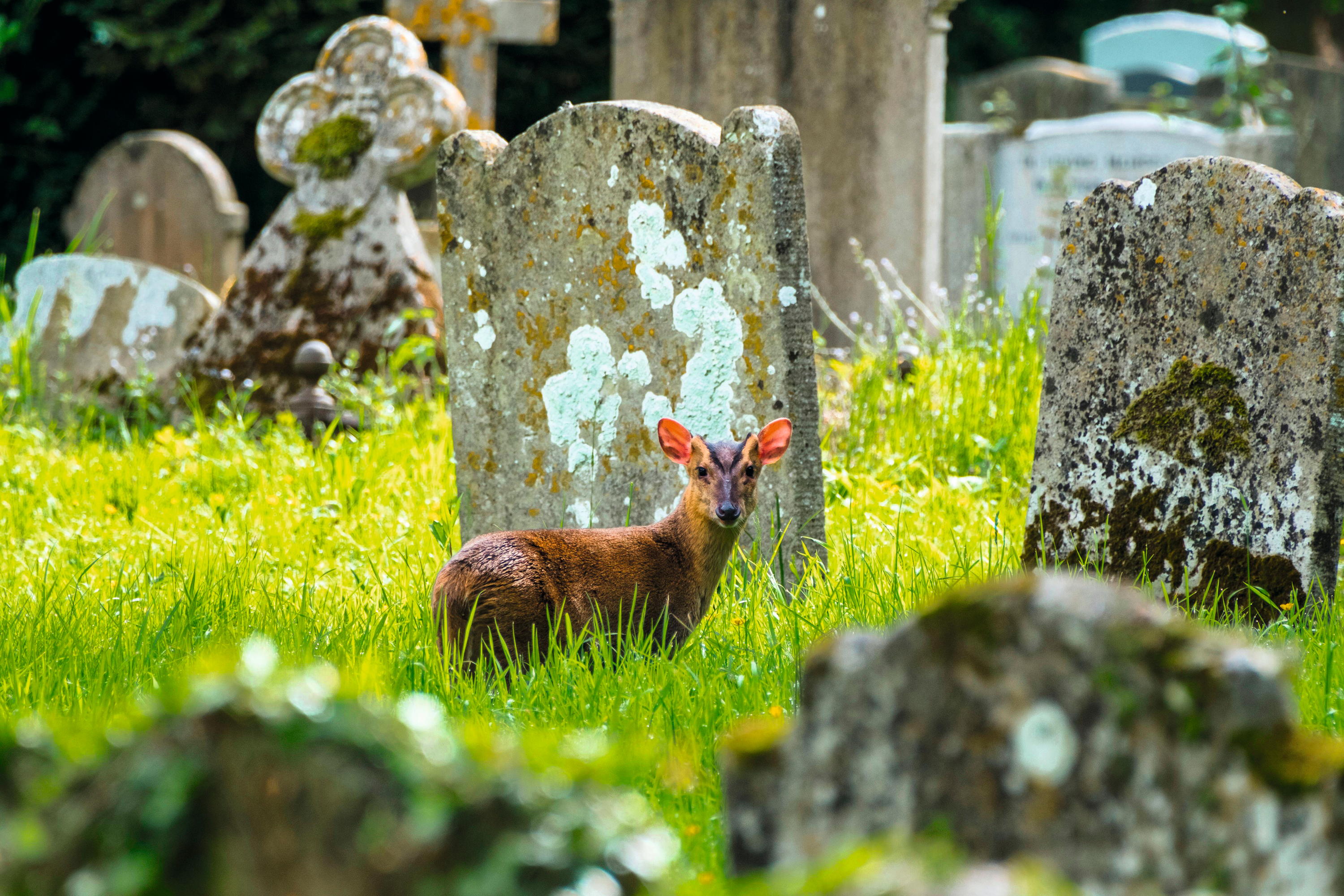
All creatures great and small are welcome in God’s acres, from the muntjac to the tiniest ladybird and rarest bird.
Churchyards are for people, as well as the natural world, and are a rare example of both co-existing happily side by side. Free for anybody to enter, they are used for dog walking, convenient cut-throughs and safe routes to school. Furthermore, they are places of contemplation, commemoration and celebration, appreciated by the young, the elderly and everyone else in between.
‘Church is not for everyone, but churchyards are for everybody,’ eulogises Canon David Primrose, who recently retired from a post at Lichfield Cathedral. He highlights the Nature-friendly awards available to churches in that diocese: ‘Optimising the natural beauty of a churchyard provides opportunities for those who want to contribute, but don’t want to attend worship, and a place where people can stop and be at peace.’
As Hugh Warwick, a hedgehog expert who encourages churchyards to leave a corner of brambles or piles of logs for small mammals, affirms: ‘Places that are managed with a degree of reverence can be managed with reverence for Nature, too.’
Caring for God’s Acre — 01588 673041; www.caringforgodsacre.org.uk
The clergyman
The Right Revd Graham Usher, Bishop of Norwich, brought 100,000 bees with him when he took up his post in 2019. An ecologist by training, he is the Church of England’s lead bishop for the environment and has written two books on spirituality and the landscape.
‘I feel passionately that churchyards should be places for the living, as well as the dead. I’m hugely privileged to have the four-acre private garden, which has belonged to the Bishops of Norwich for centuries. My wife and I are keen to share it and we welcome groups from inner-city schools. Each year, we hold a garden party for refugees and invite local charities to use it for fundraising.
‘I keep bees here and I’m very keen on growing food with as few food miles as possible. We make a lot of jams and chutneys to give as gifts. We leave some areas unmown and it has been a wonderful surprise to see what was in the seedbank, including pyramidal, early purple and bee orchids. To see children running around the wildflower meadow, with lots of bees and insect life flying about, is really joyous. For me, it’s about celebrating the joy of God’s creation all around us.’
The volunteer
Ray Allen is a member of a local botany group and, in 2017, helped set up a working party to improve the biodiversity of the churchyard of St Michael’s in Lichfield, Staffordshire. At nine acres, it is one of the five largest in England.
‘The churchyard was beginning to look uncared for. We first cleared some brambles to allow wildflowers to grow. Parts of the churchyard are ancient woodland and there are a lot of English bluebells, dog’s mercury and wild garlic. We’ve got most of the 33 native tree species here and are planting more, with the aim of having them all. There’s a wonderful avenue of crab apple trees running downhill from the church door to the main gate, which the Guides have underplanted with daffodils. The spring bulbs are spectacular between January and June.
‘There are meadow areas, too, and we recently established a wildflower garden to educate visitors, as well as an artificial wildlife hedge. This is a 66ft-long, 3ft-wide stretch of posts filled with twigs and fallen branches to make a habitat for wood voles, bank voles and shrews.
‘I do quite a bit of work in the churchyard on my own and many of the regular dog walkers stop to say how wonderful they find it.’
The conservationist
Dr Pippa Rayner is a grassland ecologist and is the Wilder Projects coordinator for Somerset Wildlife Trust.
‘Churchyards are a real focus because of the support they have from communities. They are a ready-made network where Nature is hanging on and are extremely valuable, given we have lost 97% of all our species-rich grassland in this country. They offer varied mini-habitats that can potentially allow species to move back into sensitively managed surrounding land and hedgerows.
‘Wilder Churches & Burial Grounds started with an online event for church leaders in 2019. Together with the diocese’s coordinator for climate justice and the environment, the trust ran five training sessions to help communities get to know the value of their churchyard. We also have the support of Somerset Botany Group and its volunteer experts.
‘It’s important to get the community on board by making people aware of any changes before they are made. Using signage can reassure those worried about things looking messy that the churchyard is being cared for, but in a different way. Churchyards are good for people as well as wildlife, offering a beautiful backdrop to wellbeing: places where we can simply sit and watch a bee travel from flower to flower.’
Laura Parker is a countryside writer who contributes to the Scottish Field, the Dundee Courier and Little Toller’s nature journal The Clearing. She lives in the Cotswolds and keeps a small flock of Shetland sheep. You can follow her on X and Instagram: @laura_parkle.
